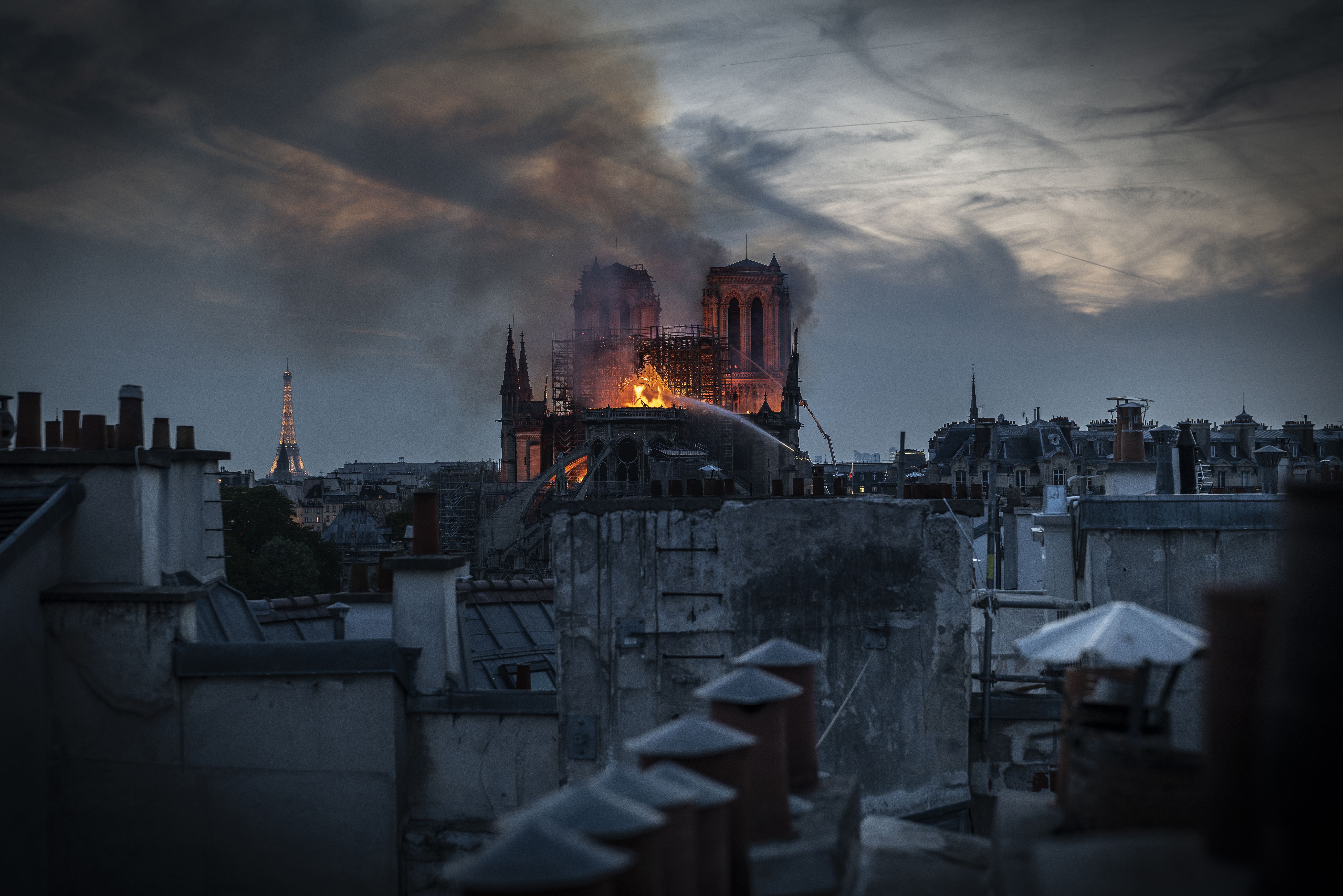Paris is the capital and largest city of France. It is one of the most beautiful cities in the world. Lovely gardens and parks and historic squares lie throughout Paris, and chestnut trees line the city’s famous avenues. At night, floodlights shine on many of Paris’s magnificent palaces and monuments. The gleaming beauty of Paris has given it the nickname City of Light.
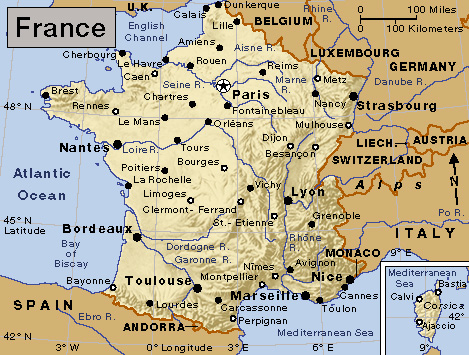

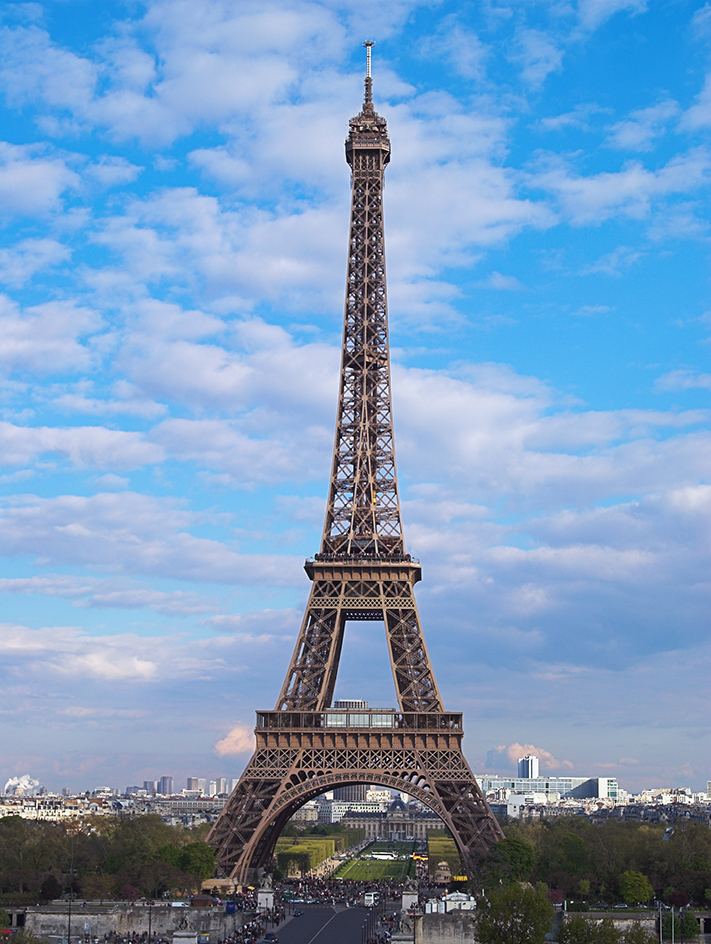
Every year, millions of tourists visit Paris to see its famous buildings, to walk its beautiful streets, and to enjoy its restaurants, sidewalk cafes, theaters, and nightclubs. Visitors flock to the Eiffel Tower, the soaring iron structure known throughout the world as the symbol of Paris. They view the artistic treasures of the Louvre, one of the world’s largest art museums, and admire the Cathedral of Notre Dame.
Paris has long been a world center of the arts, intellectual life, and education. For hundreds of years, important styles in painting and literature have developed there. Most of France’s artists and writers live in Paris. The University of Paris, one of the largest universities in the world, is more than 800 years old.
The Paris area is also a great business center. About a fifth of France’s labor force works in the greater Paris region. Factories in the suburbs near Paris turn out a wide variety of products. The many elegant shops and boutiques of Paris are known for such luxury products as expensive jewelry, perfume, and women’s high-fashion clothing. Famous designers of women’s clothing create Paris fashions that are copied in many other countries.
The history of Paris goes back more than 2,000 years. In 52 B.C., soldiers of ancient Rome found in the area a tribe of people who lived by fishing. The Romans established a colony there. During the Middle Ages, Paris grew rapidly and became a major center of culture and government. In 1792, during the French Revolution, Parisian crowds overthrew the king, and France became a republic. In World War I (1914-1918), hundreds of Paris cabdrivers transported French troops to the First Battle of the Marne, where the troops halted the German advance and prevented the fall of Paris. German forces occupied Paris during World War II (1939-1945).
More than 2,000 years ago, the Roman general Julius Caesar described the people of what is now Paris as “clever, inventive, and given to quarreling among themselves.” This description is still partly true. Parisians hold strong political views, and conflicting opinions can lead to quarrels. The similarities of Parisian life from one era to the next demonstrate a French saying: “The more things change, the more they stay the same.”
Despite these similarities, dramatic changes have taken place in Paris. Modern office and housing complexes and new cultural and recreational structures stand amid the city’s beautiful old buildings and monuments. Paris stays young while preserving the treasures of its past.
The city
Paris lies 107 miles (172 kilometers) southeast of the English Channel. It is in the heart of a fertile, heavily populated lowland called the Paris Basin. Paris has a population of about 2,190,000 and is one of the world’s most crowded cities. It has an average of 53,400 people per square mile (20,900 per square kilometer).

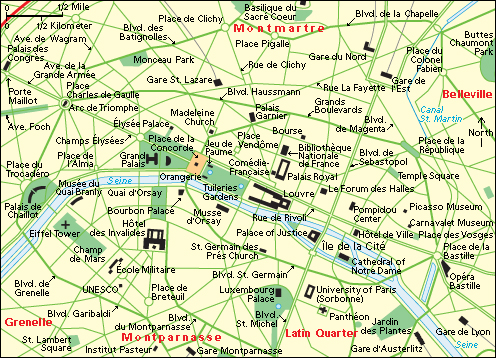
The Seine River curves through Paris for about 8 miles (13 kilometers) from east to west. The section of Paris north of the river, called the Right Bank, has busy offices and fashionable shops. The Left Bank, south of the Seine, is home to France’s leading institutes of higher education. The Left Bank also has elegant neighborhoods with beautifully restored buildings and expensive boutiques.
Paris is laid out according to plans developed over hundreds of years. The city was founded more than 2,000 years ago on an island in the Seine, the Île de la Cité (Island of the City). Paris soon spread out on both banks of the river. About 1200, a fortified wall was built around the city. Paris continued to grow, and new walls were built in a series of widening circles. Today, there are boulevards where the walls once stood.
Gardens, squares, and parks.
Paris is as much a city of gardens and flowers as of iron and stone buildings. The Tuileries Gardens, on the Right Bank, are one of the finest formal French gardens. Neat flower beds and beautiful statues line a long path through the Tuileries . Children sail toy boats in two round fountains along the broad path. They also sail boats in the central pool of the Luxembourg Gardens, on the Left Bank.
The Champs Elysees (Elysian Fields) is Paris’s most famous avenue. It is lined with beautiful gardens and rows of chestnut trees. Along its route is the Rond-Point. This landscaped circle has magnificent fountains, and formal flower beds trimmed to look like a huge bouquet. At the western end of the Champs Elysees stands the Arc de Triomphe (Arch of Triumph). Emperor Napoleon I started to build this huge stone arch as a monument to his troops in 1806. It was completed in 1836. The arch rises in the Place Charles de Gaulle (formerly the Place de l’Etoile), one of more than 130 public squares in Paris. Broad avenues extend from the square in 12 directions. See Arc de Triomphe .
At the eastern end of the Champs Elysees is the Place de la Concorde (Square of Peace). This square was built during the 1700’s. Within it are eight huge statues, two fountains, and the Obelisk of Luxor, a stone pillar from Egypt. The Obelisk of Luxor stands 75 feet (23 meters) high. During the French Revolution (1789-1799), a guillotine (beheading machine) stood in this square. Hundreds of people, including King Louis XVI and Marie Antoinette, were executed on this guillotine. Other important squares in Paris include Carrousel, Nation, Republique, St. Michel, Vendome, and Vosges. Loading the player...
Place de la Concorde
The Champ de Mars (Field of Mars) is a beautiful park that was once a military training ground. Among its gardens and treelined lawns are many attractions for children, including miniature automobile speedways, merry-go-rounds, and donkey rides. In the Champ de Mars stands the Eiffel Tower. This world-famous symbol of Paris rises 984 feet (300 meters). Visitors can dine in restaurants on various platforms in the tower and enjoy spectacular views of Paris. See Eiffel Tower . Loading the player...
Eiffel Tower at night, Paris
The largest parks in Paris are the Bois de Boulogne (Forest of Boulogne) and the Bois de Vincennes (Forest of Vincennes). These parks have several lakes for boating, horse-racing tracks, restaurants, theaters, and zoos.
Famous buildings.
The Louvre Palace, one of the largest palaces in the world, extends 1/2 mile (0.8 kilometer) along the Seine. The palace houses the Louvre Museum, one of the world’s largest art museums. The Louvre dates from about 1200, when it was built as a royal fort. It was rebuilt during the 1500’s as the royal palace. From then on, many French rulers expanded the Louvre. Napoleon III began to build the last addition in 1852. From 1984 to 1989, the Louvre’s exhibition space was restored and enlarged, and a modern glass pyramid entrance was built in the courtyard. The modern entrance contrasts sharply with the traditional architecture of the Louvre building itself. 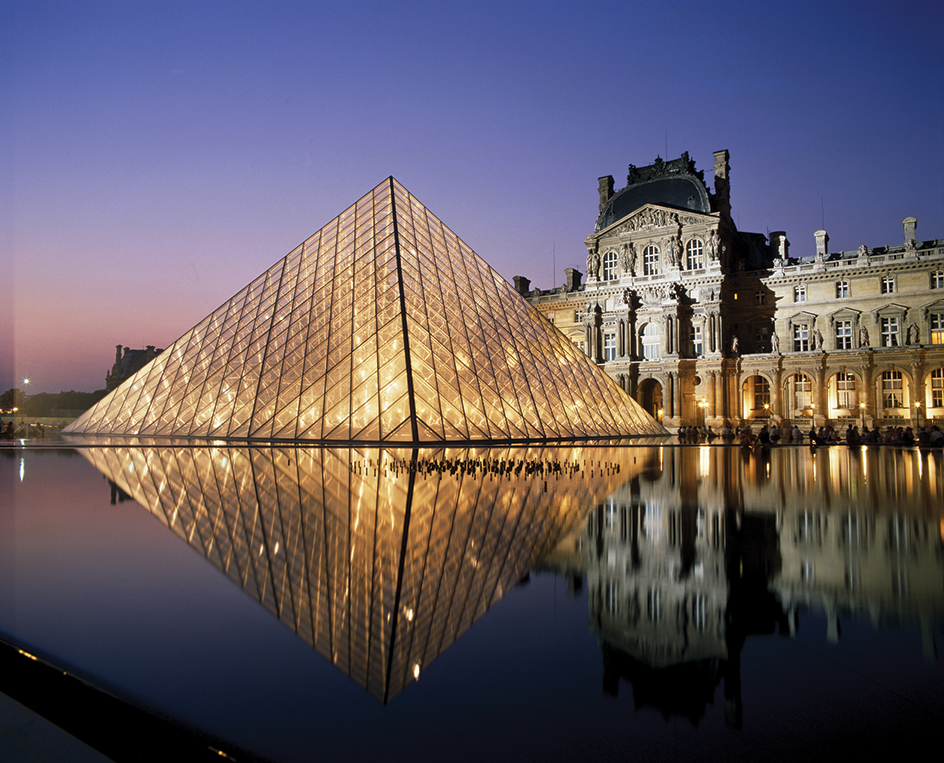
A number of historic buildings of Paris house government offices. The main house of France’s Parliament, the National Assembly, meets in the Bourbon Palace, completed in 1728. The Luxembourg Palace is the meeting place of the Senate, the less powerful house of France’s Parliament. This palace was built during the early 1600’s. The president of France lives in the Elysee Palace, built in 1718. The Palace of Justice stands where the ancient Roman governors and early French kings lived on the Île de la Cité. Today, high French courts meet there. The Hotel de Ville (City Hall) stands where Paris’s first town hall was built in 1357.
The domed Pantheon is a monument to French heroes and other famous people. It was originally a church named for Sainte Genevieve, the patron saint of Paris. In A.D. 451, she organized the city’s defenses against a threatened attack by Attila the Hun. According to the story, her prayers prevented the attack and saved the city. In 1791, the church was reconstructed and enhanced and renamed the Pantheon. It became a burial place for such distinguished French citizens as Victor Hugo, Jean-Jacques Rousseau, and Voltaire.
The Cathedral of Notre Dame, the most famous of Paris’s many beautiful churches, stands on the Île de la Cité. The cathedral was completed in the mid-1200’s, and is known for its majesty and stone carvings (see Notre Dame, Cathedral of ). Many Roman Catholic pilgrims visit the Basilique du Sacre Coeur (Basilica of the Sacred Heart). This basilica, with its huge bell tower and onion-shaped dome, is one of the city’s most familiar sights. The gleaming white church rises atop Montmartre, Paris’s tallest hill at 423 feet (129 meters) high.
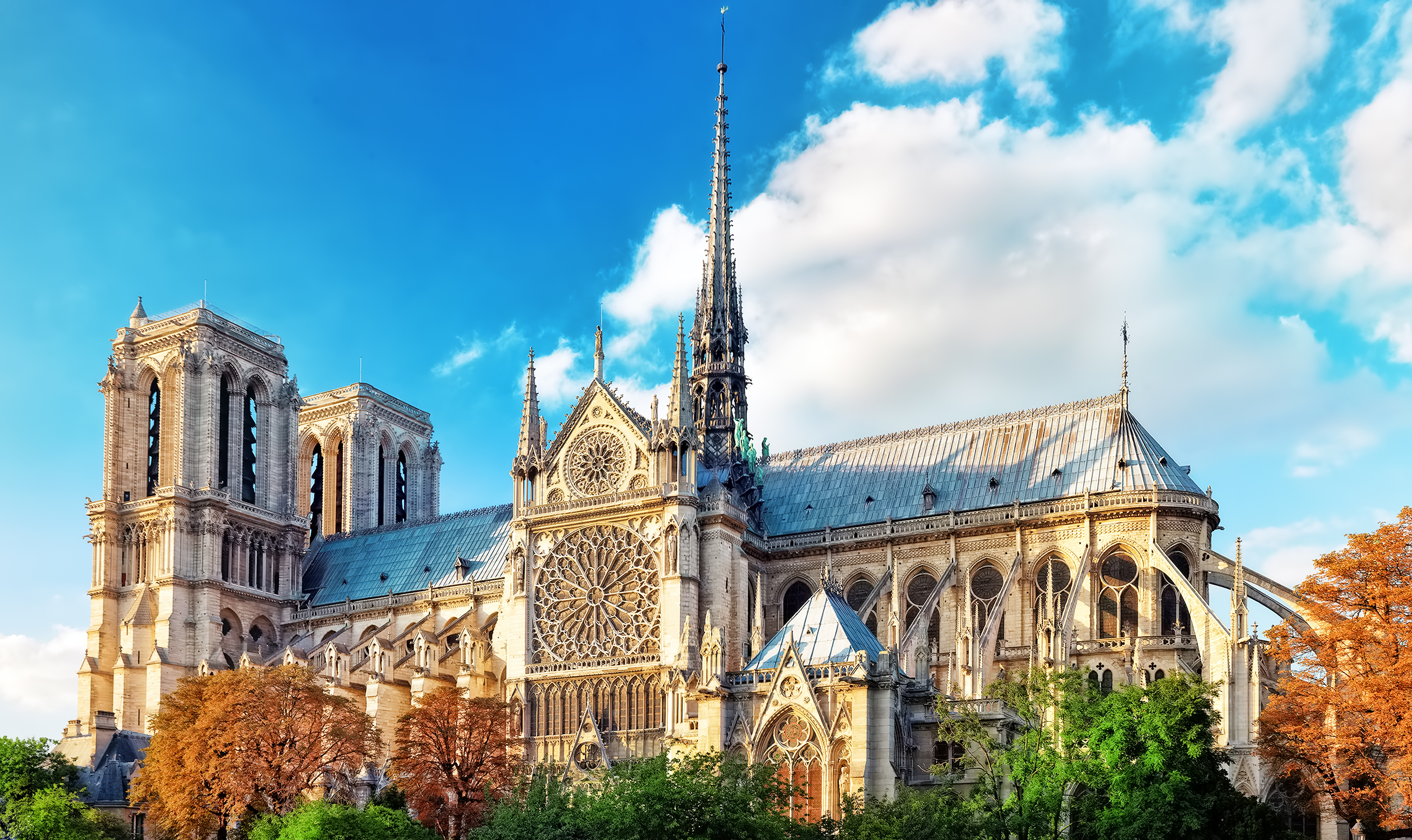

Cultural life
Arts.
Paris has long been famous as a world center of the arts. Thousands of actors, musicians, painters, and writers come from all parts of France and from many other countries to work or study in Paris. They come from all parts of France and from many other countries. They are attracted by the city’s special atmosphere of freedom in the arts, by its history of artistic innovation, and by the government’s support of creative work. Painters and sculptors show their work at exhibitions called salons, and in the city’s many art galleries. Outstanding painters and sculptors who lived in Paris include Georges Braque, Pablo Picasso, Pierre Auguste Renoir, and Auguste Rodin. Famous novelists and playwrights who lived in Paris include Albert Camus, Andre Gide, Victor Hugo, Marcel Proust, and Jean-Paul Sartre.
Loading the player...
Palais Garnier
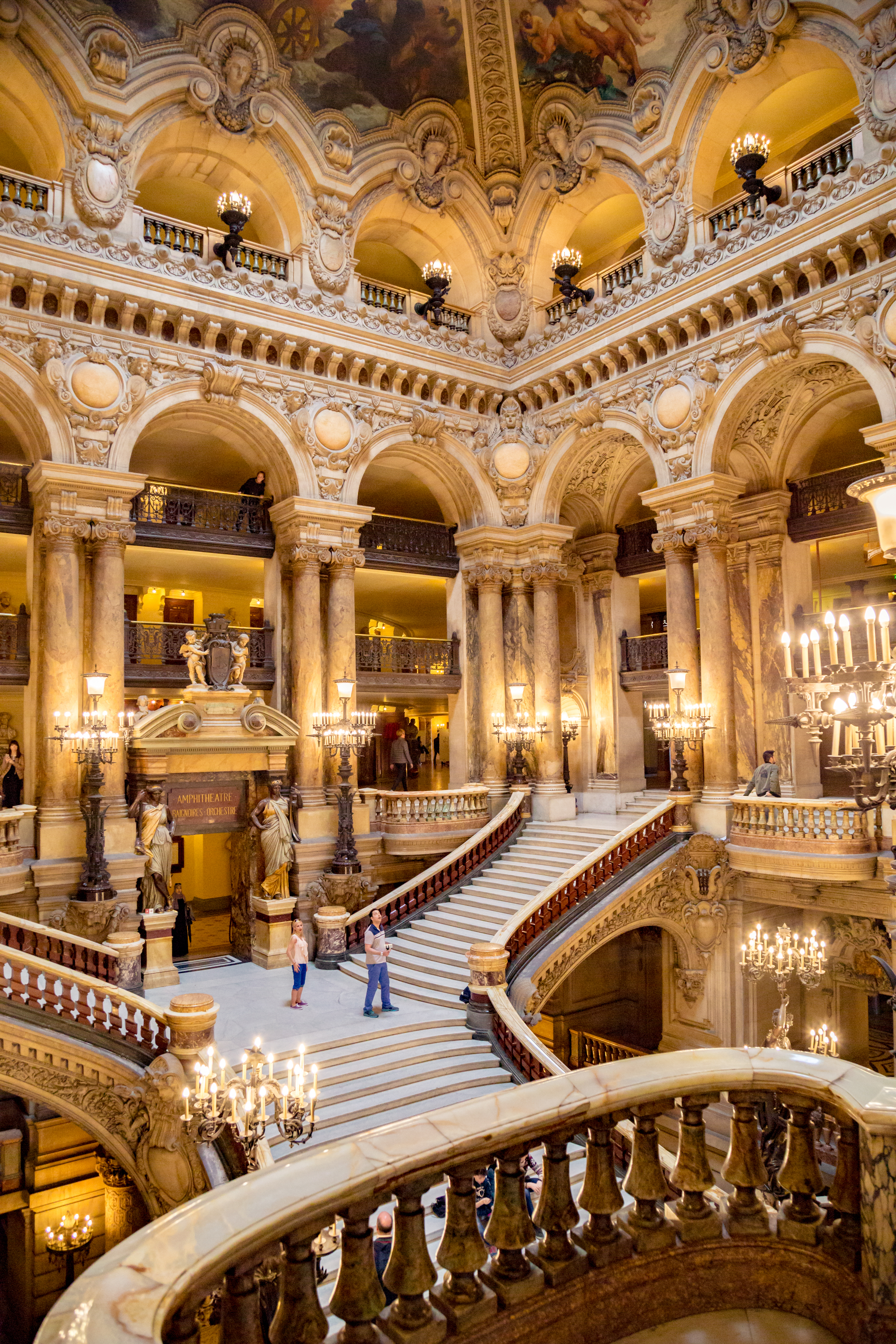
Paris has dozens of theaters. The Comedie-Francaise, Paris’s most famous theater, offers classics of French drama. The Opéra Bastille presents opera. The Palais Garnier, which formerly housed the opera and was generally called the Opera, holds dance programs. Paris also has several symphony orchestras.
Museums and art galleries
of Paris are storehouses of many priceless art treasures. The works of painters and sculptors since the late 1800’s are displayed in the National Museum of Modern Art in the Georges Pompidou National Center of Art and Culture. The Pompidou Center also houses a public library and music and industrial design centers. The building’s transparent design has caused a great deal of controversy. All the structural and service elements, such as beams and lifts, are multicolored and visible from the outside. The famous Louvre museum displays some of the world’s greatest art treasures. It houses such masterpieces as Leonardo da Vinci’s Mona Lisa and the Greek statue Venus de Milo. The huge Louvre building also houses the Museum of Decorative Art. This smaller museum has a fine collection of antique French furniture. The Picasso Museum, originally a mansion built in the 1600’s, exhibits many of Pablo Picasso’s works and paintings that the Spanish artist collected. The Musee d’Orsay houses works of art from the 1800’s, especially Impressionist paintings. The museum is a converted railroad station built in 1900. The Orangerie and the Jeu de Paume museums stand across from each other on the Place de la Concorde at the end of the Tuileries Gardens. The Orangerie’s collection includes European paintings of the late 1800’s and early 1900’s. The Jeu de Paume displays contemporary art. The Cinematheque Française houses one of the world’s greatest collections of film and serves as a museum of cinema. 
The Army Museum is one of the world’s largest military museums. It has outstanding collections of historical weapons and armor. Nearby is the tomb of Napoleon I. The museum and tomb stand on the grounds of the Hotel des Invalides (Home for Disabled Soldiers), completed in 1676. The Cluny Museum, a house built in the 1400’s, has artworks and other objects of the Middle Ages. The Carnavalet Museum, a house dating from the 1500’s, has displays that tell the history of Paris. Loading the player...
Army Museum in Paris
Schools and libraries.
The University of Paris dates from the 1100’s. It developed in an area on the Left Bank that has been called the Latin Quarter since the Middle Ages. At that time, the students and teachers who lived there spoke to one another in Latin. Today, the university has several units in the city and its suburbs (see Paris, University of ). The world-famous Ecole des Beaux-Arts (School of Fine Arts) is also in Paris. It offers courses in drawing, engraving, painting, and similar subjects (see Ecole des Beaux-Arts ). Other educational institutions include the College of France, the Institute of Political Studies, and the Ecole Normale Superieure.
The Bibliotheque Nationale de France, France’s national library, is one of the largest libraries in the world. Many of the manuscripts in the Bibliotheque were once in the Royal Library of King Charles V, which was established in the 1300’s (see Bibliotheque Nationale de France ). Other important Paris libraries include the Mazarine Library of the Institute of France, the nation’s major learned society, and libraries of the University of Paris.
Economy
Paris is the chief financial, marketing, and distribution center of France. Many company headquarters are in the city, as are many banks and other financial institutions. Much of the nation’s gross domestic product is created in the Paris area. Jobs provided by the national and local governments contribute greatly to the city’s economy. Paris and its surrounding area make up one of the country’s major manufacturing centres. But service industries account for more than three-quarters of the city’s economic output. Paris has long been a world center of such luxury goods as expensive jewelry, perfume, and women’s high-fashion clothing.
Paris is the transportation center of France. The national railroad network forms a cobweb pattern, with most lines extending from Paris in all directions. Two major airports serve Paris—Charles de Gaulle and Orly. The Paris subway, called the Metro, has more than 125 miles (200 kilometers) of track. The Regional Express Network is a suburban commuter train system that links Paris with its suburbs.
The leading newspaper published in Paris is the Le Monde. Several major television and radio networks also operate from Paris. Several of them are government-owned.
Government
A mayor serves as the head of government of Paris. A city council makes the city’s laws. The 163 council members are elected by the people to six-year terms. The council members elect the mayor to a six-year term. Paris is divided into 20 local government units called arrondissements (wards or districts). A commission handles the government affairs of each arrondissement.
From the 1870’s until 1977, prefects appointed by the national government headed the government of Paris. In 1977, a mayor became the head of government.
History
Early years.
In ancient times, a Celtic tribe called the Parisii lived in what is now Paris. The Parisii occupied an island in the Seine River. The island is now called the Île de la Cité. In 52 B.C., Roman invaders established a colony there and called it Lutetia. The town soon spread out on both banks of the river. It became known as Paris about A.D. 300.
Clovis, the first ruler of the great Frankish kingdom, made Paris his capital in 507. Hugh Capet, the count of Paris and duke of the surrounding region, became king of France in 987. As the French kings gained power, the capital grew in importance and population. Philip II, who ruled from 1180 to 1223, developed Paris as a center of culture, government, and learning.
The Renaissance.
The French kings further developed the culture and beauty of Paris during the Renaissance, a revival of art and learning that lasted from the 1300’s to the 1500’s. The people they hired to design the new boulevards, palaces, and squares looked to ancient Greece and Rome for models. The Louvre, a fortress dating from about 1200, was rebuilt as the royal palace during the 1500’s. Many French rulers later built additions to the Louvre and made it the largest palace in the world.
Paris was the center of the bloody French Revolution (1789-1799). However, much of the revolution’s violence took place in Lyon and other cities and in the southern and western provinces. See French Revolution .
The Napoleonic era.
During the early 1800’s, Napoleon Bonaparte built new buildings, laid out public gardens, and made other improvements in Paris. In 1804, Napoleon crowned himself emperor at the Notre Dame cathedral. While his power lasted, Paris served as the capital of a conquered western Europe. Napoleon III, emperor from 1852 to 1870, did much to give Paris its present appearance. He built banks, hospitals, railroad stations, theaters, and wide avenues.
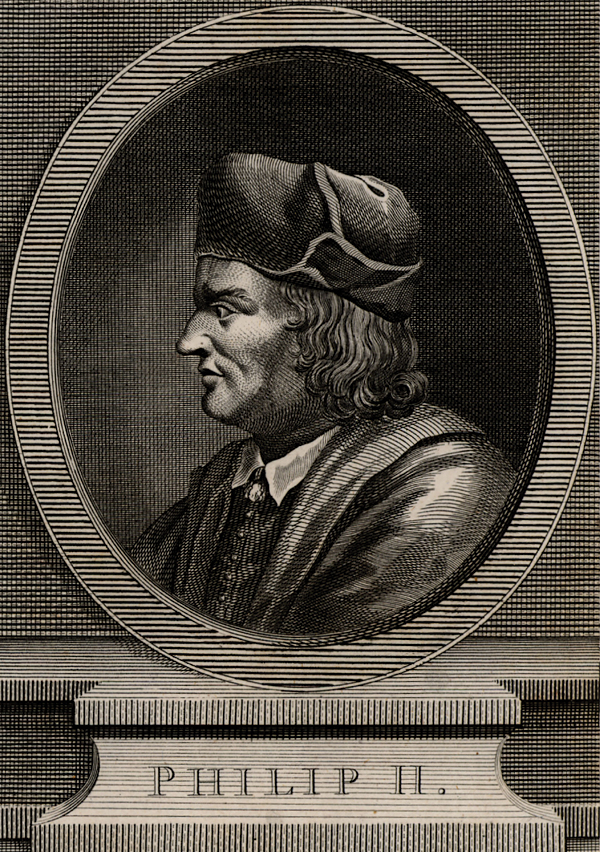
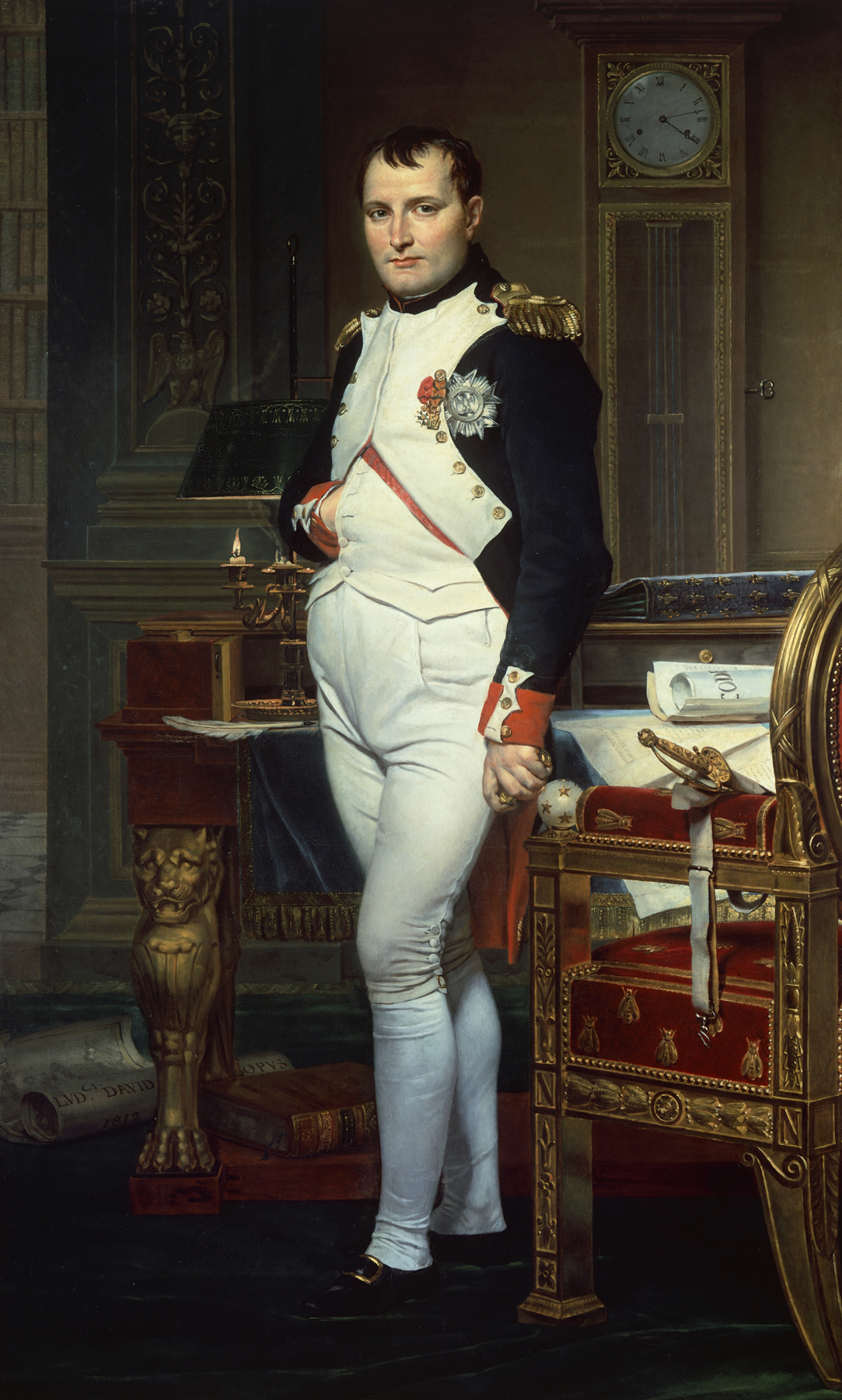
Paris in wartime.
In the Franco-Prussian War (1870-1871), Paris surrendered to Prussian troops after a hard siege in which the city’s food supplies were cut off. The starving Parisians ate cats, dogs, and rats to stay alive. See Franco-Prussian War .
The Germans did some damage to Paris with long-range guns during World War I (1914-1918) but did not capture the city. In September 1914, the Germans pushed French troops back to the Marne River, about 30 miles (48 kilometers) from Paris. The French held their ground, and taxicabs from Paris brought out fresh troops. This “taxicab army” helped win the First Battle of the Marne, which ended Germany’s chances for a quick victory. See World War I (The Western Front) (The last campaigns) .
German troops occupied Paris during World War II (1939-1945). They broke through the French defenses in June 1940 and pushed quickly to Paris. To save Paris from destruction, the French government declared it an open city, an undefended city opened to the enemy. German troops entered Paris without a fight and marched triumphantly down the Champs Elysees. Paris became a center of French underground resistance. After the D-Day invasion in June 1944, Allied forces began driving the Germans from France. The Allies freed Paris in August 1944. 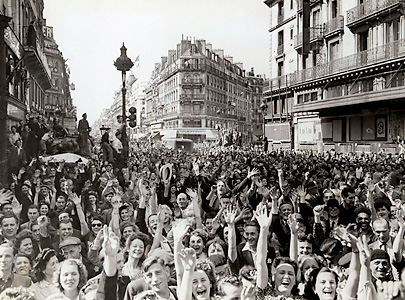
Later that year, General Charles de Gaulle became head of a temporary national government in Paris. In 1958, de Gaulle was elected president of France. Under his leadership, Paris became a modern capital city.
Renewal and new construction.
In 1960, government officials drew up a vast renewal program. Old buildings and other outmoded facilities were removed or replaced. Officials ordered the restoration of monuments, palaces, and other landmarks. Property owners were required to clean the fronts of their buildings. By the 1980’s, Paris gleamed with new beauty and brilliance. Since then, many buildings have been classified as historic monuments, including all those in the historic Marais district of the Right Bank. It is against the law to alter the exterior appearance of these buildings.
Most notable among the new high-rise buildings was the 58-story Maine-Montparnasse Tower, then France’s tallest office building, completed in 1973. But many Parisians thought it and other high-rise buildings detracted from the city’s charm. In 1973, the city council passed a 10-story height limit on new buildings in the heart of the city. High-rise construction shifted to the outskirts of the Paris area.
One of the old facilities removed from Paris was Les Halles, which had served as the city’s central marketplace for hundreds of years. Crowded into an area too small for its 30,000 employees, Les Halles tied up traffic in the center of Paris. In 1969, most of its operations moved to Rungis, a suburb south of Paris that already housed a large wholesale facility. In 1979, an indoor shopping mall and cultural center called Forum des Halles opened where the old market once stood.
A huge, futuristic complex called La Defense opened in 1978 in the western outskirts. It houses offices, shops, apartments, theaters, and sports facilities. The Arch of La Defense, the centerpiece of the complex, opened in 1989. Another complex, known as La Villette, features a museum called the Science and Industry Center, an exhibition hall, a music conservatory, and a park. Built in the 1980’s, La Villette is on the northern outskirts of Paris. In 1990, Paris began a renovation of the city’s many bridges.
Recent developments.
By the end of the 1900’s, most projects in the vast 1960 renewal plan had been completed. In addition, transportation officials renovated stations and added new trains to the Metro system. The government took steps to limit air pollution, and city planners closed some streets to automobile traffic to improve pedestrian access.
In January 2015, three Islamic terrorists killed 17 people in a series of attacks in and around Paris. The attacks centered on a French weekly newspaper called Charlie Hebdo and a kosher supermarket called Hyper Cacher. Within two days, police had killed all three suspected terrorists. On November 13, a series of terrorist attacks killed 130 people at different locations in and near Paris. The terrorist group Islamic State (also known as ISIS or ISIL) claimed responsibility for the attacks.

On April 15, 2019, a devastating fire broke out at the Cathedral of Notre Dame, which had been undergoing extensive restoration work. Much of the roof was destroyed, and the central spire collapsed. The main structure survived, however. Restoration work soon resumed amid a huge cleanup effort. President Emmanuel Macron pledged that the historic symbol of France would be rebuilt by 2024. 